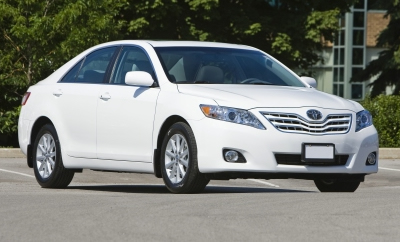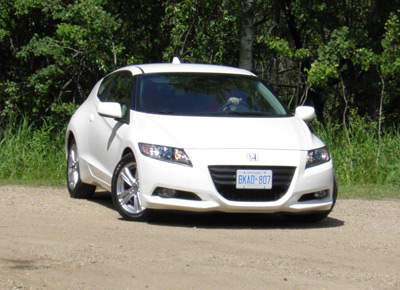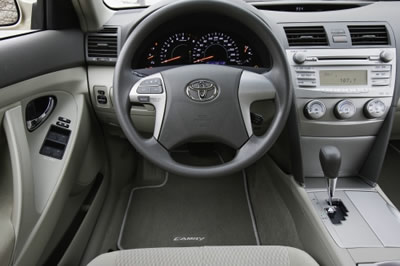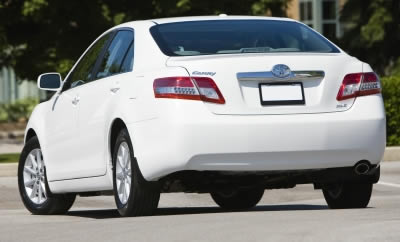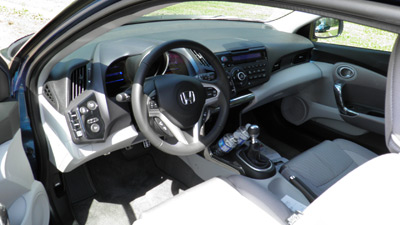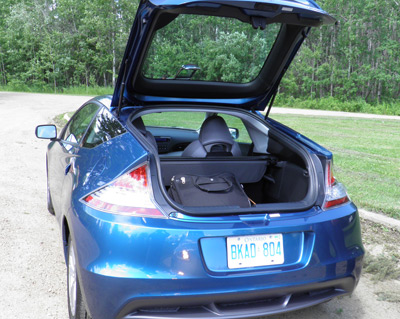|
What's New: Toyota Camry LE and Honda CR-ZBy Jim Bray One's a new design and one's a respected mainstream car. And while both offer decidedly different driving experiences, they have in common the fact that they both acquit their makers' mandates well. Toyota's Camry is one of the best-selling cars in North America, and with good reason: it's solid and dependable, comfortable and efficient, and it doesn't beat owners over their heads with a lot of gadgety technology. Honda's new sporty hybrid CR-Z, on the other hand, is a terrific way to put some fun into the ordeal of driving "greenly" – saving some gas while still offering a lively drive. The 2011 Camry is probably closer to the end of its current model life than it is to the beginning, and will undoubtedly be replaced in the next few years. Don't take that to mean the current model is obsolete, however; it's still very competitive in this segment, not only because of a good original design but because Toyota hasn't stood still in the continued development of the car. My test Camry LE was a pretty basic version of the car, the only real option being a convenience package that added things like aluminum alloy wheels, Bluetooth, satellite radio, USB audio, an eight way power-adjustable driver's seat and auto-dimming rear view mirror with compass. That's not a lot of toys, but it may be enough. Camrys are powered by either a 2.5 liter four cylinder engine that delivers up to 179 horsepower and 171 lb.-ft. of torque, depending on which Camry you buy, or a very smooth 3.5 liter V6 rated at up to 268 horses and 248 lb.-ft.. My test unit had the smaller engine and it performed well, getting off the line and up to highway speeds quickly enough for the everyday uses for which it's meant. All Camrys' power gets to the front wheels via a six-speed automatic Super ECT transmission with overdrive and sequential shift mode, and it's very smooth as well. The sequential shift mode isn't particularly sporty, but this is a Camry, after all; the manual mode came in very handy on hills and the like and would be useful when the roads are snowy. The suspension features Macpherson gas struts all around, with a dual-link rear and there are coil springs and stabilizer bars front and rear as well. My test Camry didn't come with the SE model's sport-tuned suspension, but it was fine for every day driving. Brakes are power-assisted ventilated discs up front, with solid rear discs, and Toyota throws in ABS with Electronic Brake-force Distribution (EBD) & Brake Assist (BA). Pedal feel is good. Ditto for the steering feel. Standard equipment also includes traction control and vehicle stability control, as well as air conditioning, cruise control, power door locks with keyless entry and trunk release, power windows with auto up/down on all of them (which is how it should be but usually isn't), a tilt/telescoping steering wheel, variable intermittent windshield wipers, automatic headlights (a great safety feature) and power adjustable and heated outside mirrors. Safety equipment includes seven air bags: dual stage driver and front passenger air bags, front seat mounted side air bags, driver knee air bag, front and rear head/side curtain air bags. I liked the new tweaks such as Bluetooth, which will also stream music from your smart phone if it's so equipped. Mine is, and I was delighted to find that not only did I not need to use the USB interface (though it's also a handy addition) but that the steering wheel-mounted audio controls would let me navigate forward and backward through music tracks via Bluetooth – something not all of its competition will do. Camrys obviously aren't going to set the world on fire when it comes to giving their owners a driving rush but that's not what they're about. They're about delivering you and your stuff where you want to go, without fuss, and it's a niche in which the car has excelled since day one.
It does make me very curious to see what Toyota has up its sleeve for its eventual replacement, though. This is a very competitive market niche and the bar is being raised constantly. The 2011 Toyota Camry LE starts at $21,175 U.S./$25,310 Canadian. Not bad considering what you get. Going CR-aZy Speaking of a offering some driving joy, I finally got to spend some quality time in Honda's nifty little hybrid sports car, the CR-Z. I first drove it all-too-briefly at a media introduction and liked what I saw then, but I finally got it for a full week and a bit recently and came away liking it even more than I thought I would from my initial stint. Honda describes this "hot hybrid" as a "Stylish, driver-focused vehicle with an emphasis on efficient 'green' performance" and that's a pretty apt way to put it. Like the Camry, the CR-Z won't set the world on fire from a pure performance point of view, but unlike the Camry it's a relative blast to drive anyway, and if you don't want to carve up a few apexes you can put it in eco mode and smile smugly while pedestrians pass you by as you thumb your nose at the gas stations. The car is cute as a bug's ear (on the other hand, have you ever seen a bug's ear?), with a nifty wedge shape that makes it look as if it means business. Available with either a CVT automatic transmission (with paddle shifters), you can also opt for a slick, six speed manual that shifts joyously. How much fun is this car? Well, my son said the way it felt behind the wheel reminded him of his 2000 Honda Prelude SH, a car he loved dearly and which was a real blast to drive. Sure, that Prelude would blow the doors off the CR-Z, but they both have that Honda "fun to drive" quotient in spades. You sacrifice a back seat with the CR-Z, but given the size of this car I imagine that few people would want to travel back there anyway. Powering the CR-Z is a 1.5-liter i-VTEC four cylinder engine that works in concert with the Integrated Motor Assist (IMA) system to offer both sportiness and hybrid efficiency – and you can tailor the drive for sportiness or efficiency (or just split the difference), with a three mode drive system that lets you choose between Sport, Normal or Econ (Economy) modes. The Normal setting is actually pretty decent, but Sport is where the action is – though you'll have to get used to seeing a big red circle on the instrument panel where a green or blue one would be in the other modes.
Total horsepower is said to be 122 @ 6000 rpm, with 128 lb.-ft. of torque from 1000 - 1750 rpm for the stick shifter or 123 lb.-ft. between 1000 - 2000 rpm for the CVT. Honda figures the manual will get 44.4 miles per U.S. gallon (5.3 l/100 km), with the CVT achieving 39.2 (6.0 l/100 km). Naturally, if you drive the car at all aggressively you won't get that mileage. Where the CR-Z falls down is in its outward visibility. If you're prone to shoulder checking you're not going to be happy (though you can avoid this, mostly, with the proper adjustment of your side mirrors) and the view through the main rearview mirror is marred by a big, horizontal bar that separates the upper from the lower rear windows. You'd probably get used to it in time, but I never made my peace with it. I also had a bit of a quibble with the dashboard layout. Most controls are nicely in reach, but I found the audio system controls a bit of a stretch. Fortunately, there are redundant controls on the steering wheel that cover most of the oft-used functions. Standard safety features in the CR-Z include front, side and side-curtain airbags, Vehicle Stability Assist (VSA) and Honda's Advanced Compatibility Engineering (ACE) body structure. To me, the CR-Z is really a toy, and a darn fun one at that. I couldn't care less about the hybrid aspects of it, and would rather see a little more oomph from its propulsion system, but when all is said and done, the CR-Z is still a lot of fun to drive, and if it saves you some money at the pump that can't be too bad a thing unless you own shares in an oil company. The Honda CR-Z starts at $19,200 U.S./$23,490 Canadian. Copyright 2010, Jim BrayTechnoFile.com Jim Bray is a member of the Automobile Journalists Association of Canada. His columns are available through the TechnoFile Syndicate.
We welcome your comments! |
|
|||||||||||||
